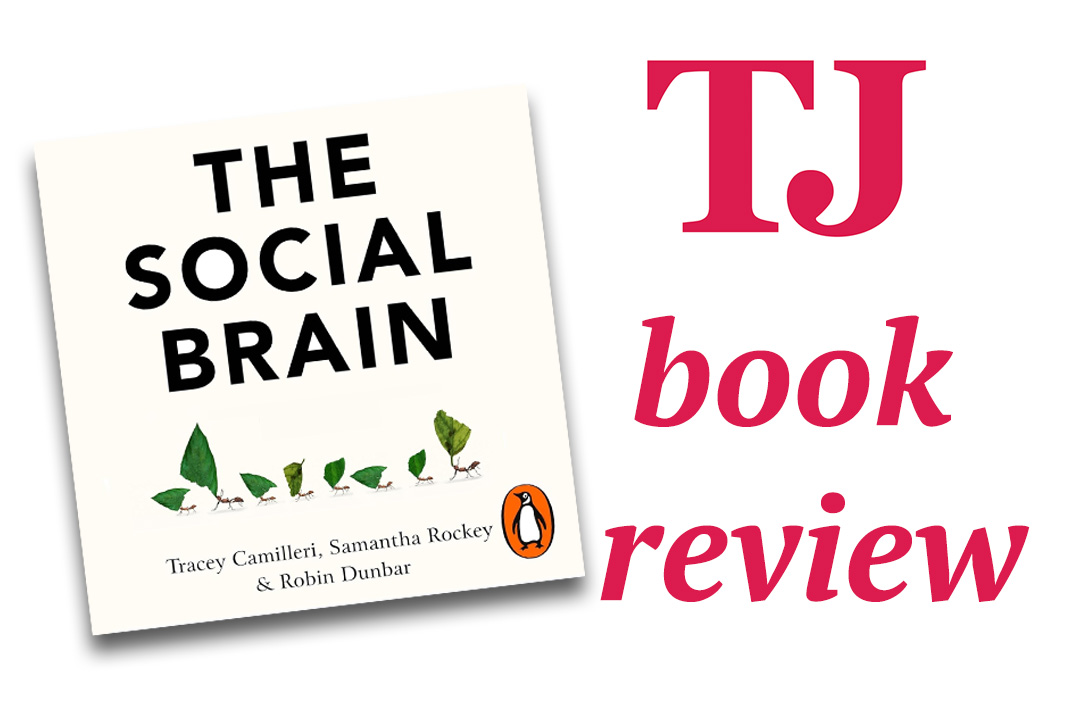The Social Brain offers a fascinating exploration into the dynamics of group connectivity and leadership. Gaëlle Delmas-Watson reveals its invaluable insights for HR and L&D professionals
Book: The Social Brain: The psychology of successful groups
Authors: Tracey Camilleri, Samantha Rockey and Robin Dunbar
Why read it?
I loved the title: The Social Brain! The book really unpicks the various elements that enable individuals to connect with a group. It is short, easy to read and snappy, combining well-documented academic research with observations from a wide range of areas: societal, business, education…
A team can be much more than the sum of its members… or much less
At the crossroads of neuroscience and anthropology, it presents a unique perspective on leadership. Without revealing too much of the book, it demonstrates that due to our own individual physiological limitations, some groups can become too large to succeed. As a history nerd, I really enjoyed this time travel from cave dwellers to the first villages and the Roman legions, right up to modern corporate hurdles.
Who will benefit from this book?
This book is clearly written for leaders and managers, offering them a different vision of team dynamics in terms of physiological abilities to mentally and emotionally deal with various numbers of people, and the limitations as group size increases.
It also seems valuable to anyone in HR and L&D. For HR, it can help analyse organisations and the different systems and ecosystems within them, understanding frictions and challenges from the human ability and limitations in connecting with a limited number of people.
For L&D professionals, especially facilitators, it offers evidence about the creation of a learning group based on the number of people versus the time spent together. We’ve all experienced moments when the same programme sometimes really engages learners and at other times feels like a drag.
What does the book offer?
The book is structured around two models. The first looks at the key elements that structure a functioning group. The second, based on the “Dunbar number”, explores the elements in the first model and the consequences for the group as it grows. It then breaks down the different elements of both models and, for each one, shares evidence and some fascinating examples from various types of organisations, contexts and environments. One example that really resonated was about a leadership programme and how one small change in numbers really affected the delivery of the programme.
How to use this book
Managing groups whether as a leader, a manager, facilitator or even a family member can be a challenge. The Social Brain sheds a different light on the factors of success or friction within a group, articulating different types of issues based on the size of the group. Size matters: it will affect communication, cultures, the ability to connect with others, and – ultimately – decision making and outputs (or lack thereof).
There are multiple references to post-Covid hybrid and remote teams, and how the digital world can magnify some of the basics of team building and create significant challenges. It is a fascinating prompt for intentionality in a digital environment.
The book shares many examples with sufficient context to understand the challenges and the system, allowing us to explore with the authors the drivers leading to positive (or less positive) outcomes. It helps shift thinking from the microscopic view of what seems like a small factor to understanding the consequences and ripples through the organisation, examining diverse organisations and cases.
It can be used as a checklist of various elements to observe and evaluate in your own context, identifying which elements are functioning and which are not, based on the size. It can help you question the size of a team and possibly the need to split or aggregate.
My experience reading it
The Social Brain is a short book (226 pages) and easy to read. I found all the concepts accessible and clearly explained. I started by reading it front to back, and then dipped back into some areas. It is worth reading all the way to the end as the “Afterword” section shares a few tips per section. There is a lot of research and graphs presenting data, which can be a great resource for presenting a business case.
Although the link with the “Dunbar” model is evident, I initially found it challenging to understand how the “Thrive” model fits in the overall aim of the book.
What I really like about it is that it looks at groups as more than just a collection of individuals. It shows that depending on some often-overlooked elements, a team can be much more than the sum of its members… or much less. It is refreshing to read a book that does not try to fix individuals, but treats the group as an independent entity.
Gaëlle Watson is Founder and Digital Learning Strategist at SyncSkills




